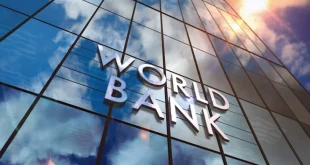From breeding animals to imported cheese and used cars, tax relief lands in elite hands as the public watches from the sidelines

ISLAMABAD, July 3 — The federal government has slashed import duties on over 7,000 items in the new fiscal year, with the declared aim of supporting industry, food security, and affordability. But a close look at the products and revised duty rates reveals a pattern: the relief largely benefits businesses serving affluent consumers and politically connected importer groups.
Cheese, Codfish, Coffee — Who’s Buying?
Duties on luxury and high-end food items have been brought down significantly. Cheese, often sold at premium outlets in Pakistan’s upscale urban centers, now carries a reduced 40% duty. Codfish—imported live and sold in gourmet seafood stores—faces just 5%. Bulk coffee imports, a backbone for café chains and boutique roasters, now attract 15%.
Even breakfast cereals like cornflakes and pasta—mostly consumed by upper- and middle-class urban households—now carry a flat 20% duty. Fresh apples and dates are taxed at 24% and 20%, respectively, down from earlier rates, giving importers room to dominate seasonal fruit markets, especially when domestic supply is low.
These are not staples for low-income groups, but products sold in air-conditioned grocery chains, high-end marts, and imported food aisles of major cities.
Livestock Relief for Agribusiness, Not Small Farmers
Duties on breeding animals and imported chickens now stand at 5%. Yet such imports require infrastructure—cold chains, certified farms, and veterinary facilities—only available to large agribusiness operators. Smallholder farmers rarely import breeding stock themselves; they purchase from intermediaries at market prices unaffected by import duties.
Frozen fish duties remain high at 17.5%, but fish heads, tails, and skins—byproducts used in feed and processing—have been brought down to 5%. Again, these are industrial inputs for food processors, not items landing on everyday dinner plates.
Dairy and Sweeteners for the Urban Middle
Milk, cream, butter, and yogurt imports now face 20% duties. These are often used by fast food chains, commercial bakeries, and mid- to high-end restaurants. Honey, another import-driven sweetener used in branded products, sees its duty set at 24%.
For most rural and low-income urban consumers, these products are price-inaccessible imports to begin with, meaning reduced duties won’t change affordability at their level. But for branded food manufacturers and retail brands, these cuts directly raise margins or expand product lines.
Used Vehicle Imports: Phased Windfall for Traders
From September 2025, Pakistan will allow commercial import of vehicles up to five years old at 40% duty. That will drop to 30% in 2026, 20% in 2027, 10% in 2028, and zero by 2029.
Such vehicles—primarily Japanese or Korean used cars—are typically bought and resold by established auto importers and showroom owners. The scheme will also benefit overseas Pakistanis who have lived abroad for 700+ days, enabling them to import vehicles under relaxed terms.
Yet these measures don’t reduce prices for first-time car buyers in the local market—especially when local auto assemblers still operate under protected pricing and limited competition.
Chemicals and Metals: Relief for Big Industry
Duties on magnesium, nickel, and carbon dioxide—used in steel, fertilizer, and bottling industries—have been slashed to 2.5%. Varnish, paint enamel, and lacquer duties were also cut to 5%. These changes are tailored to reduce input costs for large-scale manufacturers and construction firms, not small artisans or local workshops.
A Budget that Serves the Top
While the government frames the import duty cuts as pro-industry and pro-consumer, the list of affected items points to a different reality. The main beneficiaries are corporate farms, retail giants, importer lobbies, café chains, auto dealers, and high-end food processors. Ordinary consumers, especially in rural or lower-income urban settings, are largely left out of this fiscal relief package.
The 2025-26 budget, rather than redistributing resources or enabling local production, tilts toward an economy that already caters to the well-off.
 Radio News Network Radio News Network
Radio News Network Radio News Network
